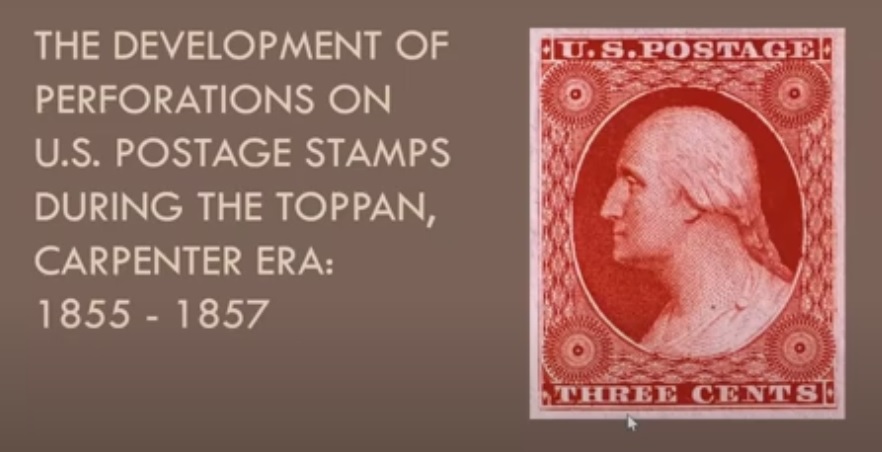Dr. Charles J. DiComo, President of the Philatelic Society of Lancaster County and the Empire State Postal History Society, recently discovered a U.S. #11P3 pair – the 3¢ 1851 imperforate “brush stroke” proof postage stamp. This discovery led him to revisit the events preceding the purchase of the postage stamp perforating machine by Toppan, Carpenter & Co (TCC). He reviews the inventors of the rotary perforating machine, discusses the rouletting trial period by TCC with Perkins, Bacon and Bemrose in England, the subsequent conversion to a stamp perforator, and the eventual issuance of perforated U.S. 3¢ postage stamps in February 1857.
This work is based on the research of W. Wilson Hulme, one time curator of the Smithsonian National Postal Museum and renowned postal historian, who pioneered this area and passed along his database and unpublished research to Charles prior to his untimely passing in 2007.
This lecture covers the earliest day of postage stamp production and the events leading up to the development of perforations, which make postage stamp separation an ease, over the imperforate variety – which we use to this day.

